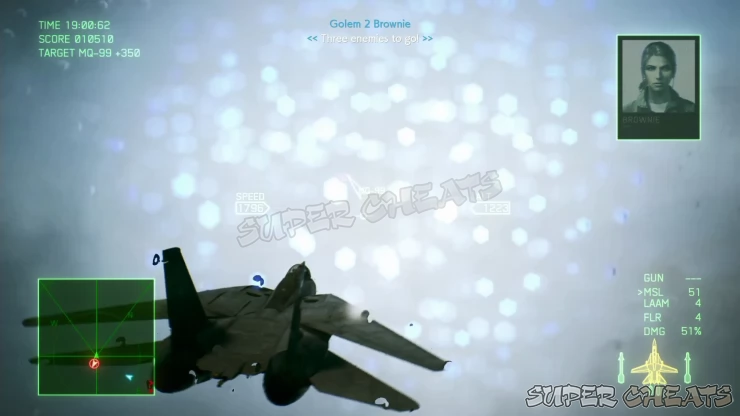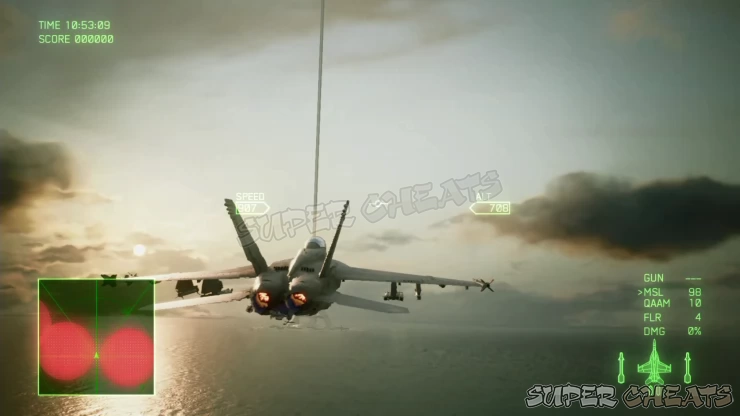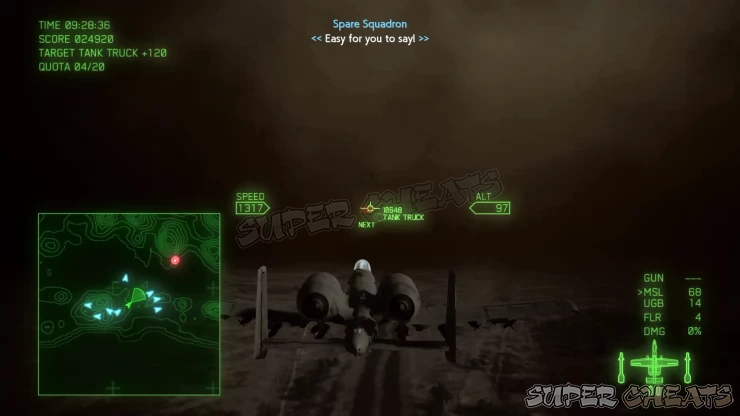Environmental Hazards
There are natural environmental hazards that can affect your flying and you should be ready to react quickly and correctly to avoid crashing.
Clouds
Clouds are not necessary hazards since you can use them to throw off enemy Missiles’ homing or in certain missions, visual concealment. However, flying through clouds can cause your plane to ice up, restricting your vision and may cause issues with your system. The visual cue will be ice crystals forming in the screen or outside your canopy (in first person mode).
To fix this, you need to fly out of the clouds or lower your altitude. There are specific parts that will lower the chance of ice forming and hindering your plane though we suggest getting offensive or defensive upgrade parts instead since this hazard can be easily rectified.

Turbulence
These powerful gusts of wind are unpredictable and of course, no indication when they’ll happen. You’ll only notice it when your plane is having a hard time responding to your controls and if you’re getting slowly blown off course. The only way to deal with turbulence is to maintain your speed or accelerate, while making minute, instant adjustments to your heading.

Dust Storms
As the name implies, flying through dust storms will have you deal with a combination of powerful turbulence and almost zero visibility. You have to actively rely on your sensors, radar, and even have to fly low to be able to see a bit.

Thunderstorms
Aside from the risk of icing up, heavy thunderclouds will also bring random lightning strikes. If you get hit by one, your plane will be jolted up a bit but you’ll still be able to maintain flight. However, your HUD will have temporary issues. This effect will disappear after a while but while your system is recovering from the strike, your lock-on capabilities will be affected as well. There’s really no way around this; if you get hit, continue flying carefully and engaging targets until your system recovers. It’s possible to get hit by lightning multiple times in severe weather conditions.


Anything missing from this guide?
ASK A QUESTION for Ace Combat 7: Skies Unknown
Comments for Environmental Hazards
Add a comment
Please log in above or sign up for free to post comments- Basics - Features
- Basics - Game Mechanics
- Basics - Multiplayer
- Campaign
- Assault Records
- Extras
 Join us on Discord
Join us on Discord
